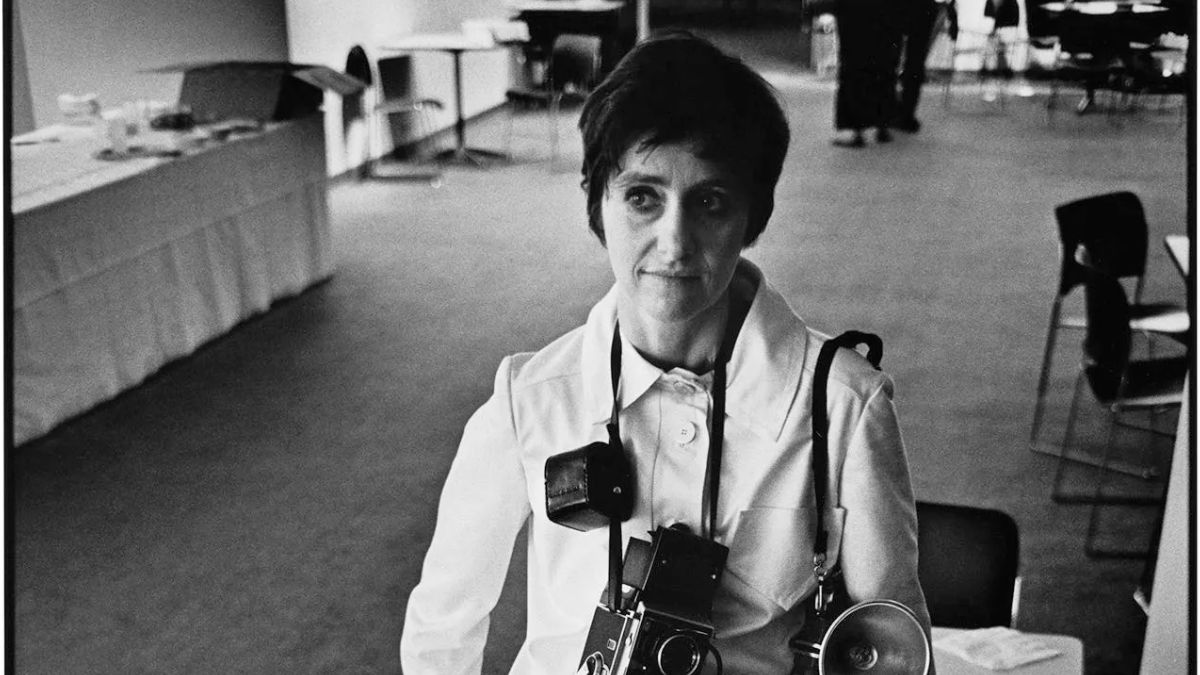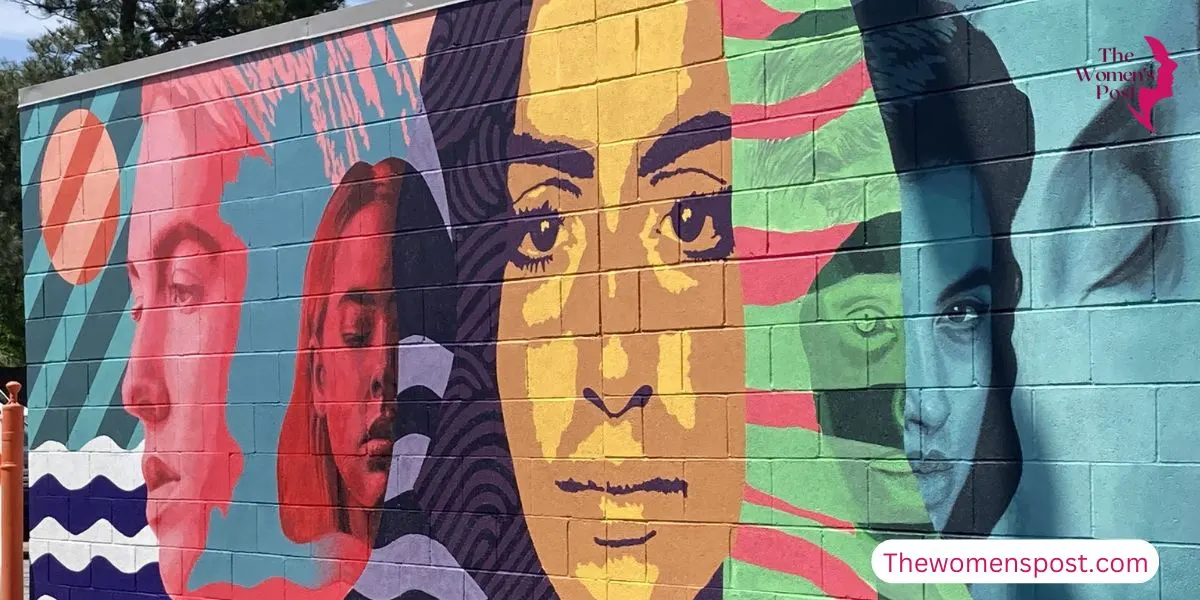Diane Arbus: The Artist Who Found Beauty in the Unseen

Some artists seek beauty in the conventional — the smooth curves of a sculpture, the warmth of golden hour light, or the comfort of a well-composed picture. Diane Arbus, on the other hand, examined the margins. She investigated the cracks in society’s pavement and discovered the type of humanity that most people avoided. Her images did not simply communicate; they glared back at you.
Diane was born in 1923 in New York City to a rich Jewish family, and her childhood began in a world of opulence. Her parents owned a department store, and she grew up with the trappings of wealth: nannies, expensive schools, and art courses. Diane, however, felt out of place from an early age.
She previously said that her childhood made her feel like “sort of a little freak.” That unease with life’s glossy surface would come to characterise her creative voice.
Escaping the Gilded Cage
Diane married Allan Arbus when she was only eighteen. He was pleasant, imaginative, and ambitious. During the 1940s and 1950s, they collaborated on fashion photography, photographing for major magazines such as Vogue and Harper’s Bazaar. But something didn’t click with Diane. The perfection of the fashion industry, with its controlled postures and shiny finishes, felt artificial to her.
By the 1950s, she was moving away from that environment, both professionally and emotionally. Her marriage to Allan was unravelling.
They parted in 1959, but stayed close until her death. Diane was on a quest to establish her true identity, not just as an artist, but as a woman. She was no longer interested in what the world considered attractive. She wanted to discover her own truth.
A Different Lens
Around this time, she began studying photography under Lisette Model and, subsequently, Richard Avedon. Diane, influenced by them, dropped her 35mm camera in favour of a square-format Rolleiflex. This was a watershed moment – the Rolleiflex pushed her to approach closer to her subjects, slow down, and look them in the eyes. That closeness will become the distinctive characteristic of her art.
Diane was not interested in capturing anything that was already evident. She wanted to explore deeper. She began touring the streets of New York with her camera, seeking for subjects that most people overlooked: transvestites, dwarfs, nudists, circus performers, old folks in run-down hotels, and toddlers with eerie stares. These were the folks on the edges, often living lives of estrangement, and Diane provided them the opportunity to be recognised.
However, her purpose was not to exploit or sensationalise. Quite the reverse. She reportedly observed, “A photograph is a secret within a secret. “The more it reveals, the less you understand.” Her pictures evoked inquiry rather than explaining or judging. They nailed fragility, uncertainty, and the harsh reality that no one is one thing.
Controversy and Connection
Diane’s work was divisive. Some criticised her for being voyeuristic or chilly. Others saw her as genuinely compassionate. It is true that her photographs may be unsettling to look at. They challenge us to confront aspects of humanity that we frequently pretend do not exist.
Take, for example, her iconic shot “Child with Toy Hand Grenade in Central Park.” The sight of a wiry little child holding a toy grenade, his face distorted in an odd grimace, is unpleasant — yet captivating. Was he angry? Playing? Pretending to be a soldier? Diane did not inform us. She only offered us a peek, leaving the rest to imagination.
Her portraits are strong because they are honest. Her subjects were not posed in the typical way.
They were not hiding behind social masks. In many respects, Arbus encouraged individuals to be themselves – raw, flawed, and complex.
Mental Health and Darkness
Diane’s interest in the darker aspects of the human experience was not merely professional; it was very personal. She suffered from depression her entire life. Her desire to connect with individuals on the periphery may have been a reflection of her own feelings of isolation.
By the late 1960s, she had gained substantial fame. Her work was shown in important exhibits, including the Museum of Modern Art’s “New Documents” exhibition in 1967, which also included Lee Friedlander and Garry Winogrand. Despite her burgeoning prominence, Diane’s personal conflicts deepened.
She was extremely self-critical and frequently felt misunderstood. She exposed others’ loneliness, weirdness, and silent sorrow, which matched her own. Diane Arbus killed herself on July 26, 1971, when she was 48 years old. The news shocked the art world. She had so much to say and so many faces to show us.
Legacy of Unflinching Honesty
Diane’s art did not diminish following her death. In fact, it attracted much more attention. A year after her death, the Museum of Modern Art staged a big retrospective, one of its most popular shows to date. Her images were eerie, provocative, and innovative. They had transformed people’s perceptions of portraiture and what photography could achieve.
In many ways, Diane Arbus allowed succeeding generations of artists to explore the taboo, the unpleasant, and the genuine. She paved the way for photographers such as Nan Goldin, who likewise trained their eye on life’s messiness. She influenced art to accept complexity and go beyond sanitised depictions of truth.
Her art continues to address issues of ethics, empathy, and representation. Has she romanticised the outsider? Did she exploit her subjects? Or did she simply see them more clearly than other people could?
Seeing the Invisible
Diane Arbus’s long legacy stems from the fact that she experienced people rather than simply documenting them. She asked us to do the same.
She felt that the truth about individuals is stranger—and more fascinating—than anything we might imagine. That we are all playing versions of ourselves, and that the few instances when that performance falters are when something genuine emerges.
She has previously written: “I really believe there are things which nobody would see unless I photographed them.” That’s not just a photographer talking; it’s someone who has spent her life pursuing authenticity in an appearance-obsessed culture.
A Human Mirror
In the end, Diane Arbus was not only photographing the “other.” She was revealing us pieces of ourselves that we hide, dread, and may not even be aware of.
Her photographs invite us to sit with pain, to look at things we’d rather avoid, and to recognise that the boundary between “normal” and “abnormal” is far thinner than we imagine.
In an age of edited pictures and controlled realities, her work feels more essential than ever. It serves as a reminder that beauty is not necessarily conducive to comfort. That connection is not always simple. And that truth, in all its rawness, is worth exploring, even if it makes us uncomfortable.
Diane Arbus did not aim to mend or beautify people. She merely glanced. And in that gaze, she acknowledged their presence. In a world that frequently erases the marginalised, she made a record of their presence. A loud, vibrant, and memorable record.
Also read: The Power of Pause: Reframing Menopause as Strength, Not Shame









